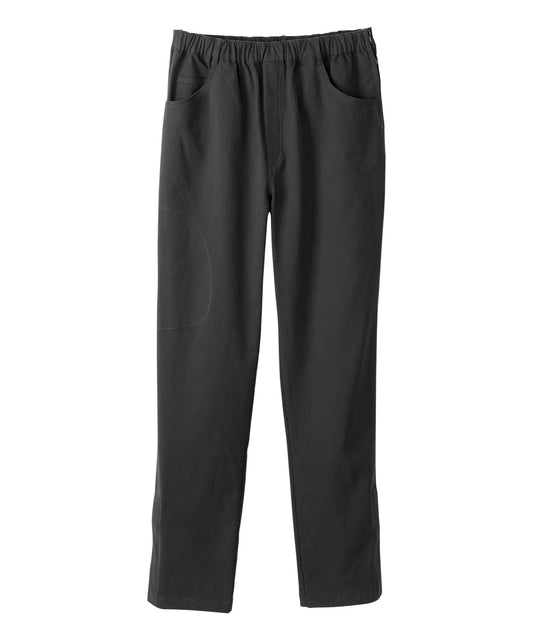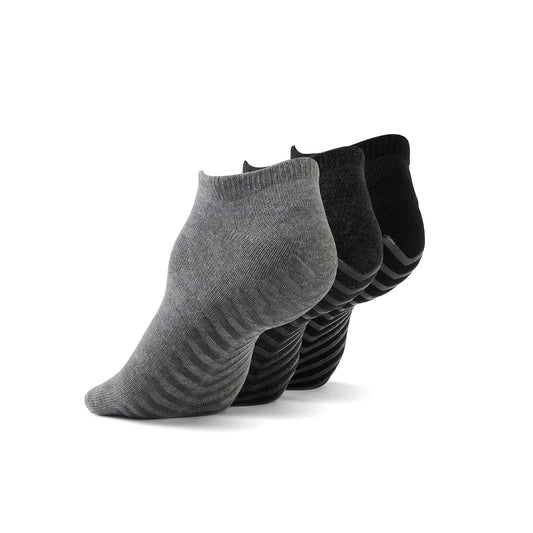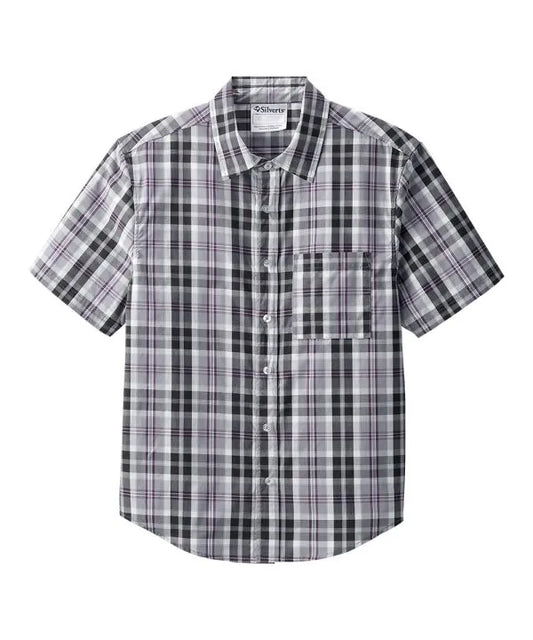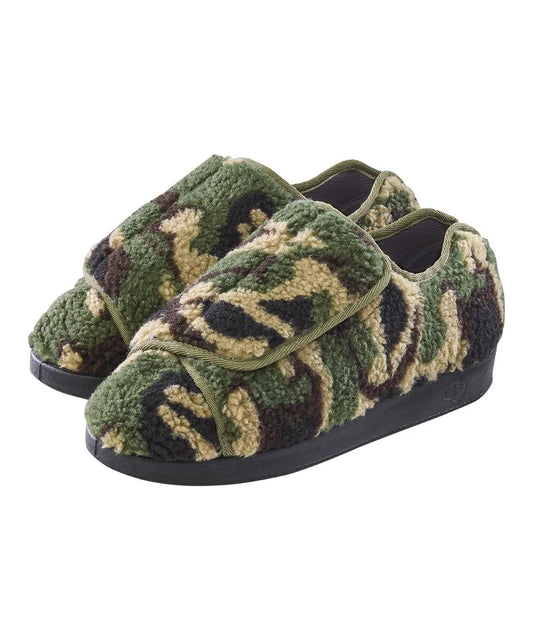Written by:Yanushan Vasikaran
For wheelchair users, dressing professionally should not require a compromise either in comfort or in functionality. Traditional office wear, however, all too often does not comply with seated poise or mobility needs. The fashion world is slowly moving toward this ideal, and adaptive workwear is spearheading the movement toward accessible, dignified, and fashionable professional wardrobes.
Whether one is attending a job interview, returning to work after a period off, or attempting to develop a prosperous personal image, adaptive workplace wear provides the perfect combination of sophistication, comfort, and practicality. In this blog, we will outline ways of finding wheelchair-accessible workwear, including wrinkle-free shirts, professional suits, and adaptive shoes. In addition, we will highlight three adaptive products that can be easily integrated into any professional work wardrobe.
How To Find Office-Appropriate Adaptive Clothing
When work clothing is bought by professionals, they generally look for neat, clean, and appropriate clothing based on their organization's dress code. But for wheelchair users, there is one more factor to consider: seated comfort, ease of use throughout the dressing process, and durability at areas of garment-to-chair contact.
The main issue here is determining clothing that is carefully designed for a seated person. This often requires:
-
Reduced fronts help reduce bunching of material around the waist area.
-
Flat seams reduce skin irritation, especially for long sitting periods
-
Fastening devices like magnetic, zip, velcro, or snap fastenings should be chosen instead of conventionally used buttons and clasps.
- High back rises in trousers are meant to avoid gaps or exposure when seated.
Best Wrinkle-Resistant Fabrics For All-Day Wear
Rather than recycling existing clothing, adaptive clothing is made specifically with the seated user in mind. For professional workers who use wheelchairs, this means that dressing professionally for work while being comfortable is possible.
In addition, individuals can search for fashion houses that engage occupational therapists or physically challenged individuals when designing their clothing. Such levels of consultation not only ensure usability but also guarantee attractiveness in terms of aesthetics.
The Best Wrinkle-Resistant Materials for Long-Term Use
Long office hours often mean long periods of sitting dressed in the same outfit. Traditional materials like cotton or linen can start to wrinkle, lose form, or feel stiff, especially at sensitive contact points like the hip or thigh. For this reason, wrinkle-free materials go beyond matters of fashion; they also concern issues of maintaining one's dignity and guaranteeing all-day comfort.
The following are some chosen cloth materials which can be considered as best:
1. Ponte knit fabric
Ponte is a double-knit fabric that integrates structure and flexibility. The wrinkle resistance and ability to hold its shape make it an appropriate choice for pants, skirts, and even jackets. Because it is thicker than jersey but still flexible, it is widely used by wheelchair users.
2. Stretch Blends (Polyester-Spandex)
These blends have superior recovery and resist creasing to a large extent, especially in areas where the garment is compressed when seated. Additionally, stretch blends allow slight size changes, which becomes very helpful in cases of variable swelling or muscle contraction.
3. Tencel (Lyocell)
Naturally breathable, light, and wrinkle-resistant, Tencel is an eco-friendly option that expresses luxury while not sacrificing functionality. It is especially well-suited for application in blouses, shirts, and dress trousers.
4. Wool Blends
In colder or more formal environments, lightweight wool blends help to produce a finished look while offering thermal regulation and a reasonable amount of inherent stretch.
Using such materials not only saves time on ironing but also helps keep you looking crisp and professional from 9 to 5 and beyond.
Are There Adaptive Blazers & Suit Jackets?
In fact, the least discussed area of adaptive workwear has probably been professional outerwear, like suit jackets or blazers. Traditional blazers tend to restrict movement, gather at the underside when sitting, and can be extremely difficult to put on by oneself. Special adaptive blazers were explicitly designed to overcome all of these restrictions.
Things to consider looking for:
-
Underarm gussets or extension panels function to add flexibility and mobility.
-
Inclusion of magnetic front closures or concealed zippers makes it possible to individually put on the jacket.
-
Open-back or side-snap designs for individuals who dress with assistance
-
Unstructured shoulders help to relieve stiffness and promote mobility.
- Trimmed-back lengths help to prevent bunching and also help set up a more defined sitting profile.
While adaptive blazers continue to be fairly conservative compared to other types of daily clothing, forward-thinking firms have been undertaking initiatives to close this gap. Adaptive blazers, similar to standard jackets, incorporate crisp collars, sophisticated silhouettes, and subtle colours; however, there can be subtle design alterations geared to maximize their functionality.
In cases where users of wheelchairs attend meetings, interviews, or special functions, the purchase of an adaptive blazer can certainly make one look better while maintaining independence and convenience.
Dressing For Interviews With A Disability
Job interviews do have the potential to make people nervous; however, for people with disabilities, particularly those who are visible, the added pressure is to make a good impression and to keep the emphasis off of how they are dependent on assistive devices or on certain adaptive requirements. Proper dress can make you feel more confident.
Listed below are some tips crafted to help you feel more empowered and refined:
-
Prioritize comfort and confidence. Wear something that fits well, accommodates your needs, and allows you to focus on your conversation, not your clothing.
-
Follow conservative colour schemes. Navy, black, gray, and white are seen as safe and professional colours. Avoid using bold prints unless similar alternatives suit your style and the work environment encourages individualism.
-
When evaluating clothing, it's best to sit down. Look at the mirror image from your wheelchair and think about how clothes hang, fit, and look on you. Clothing that has poorly fitting ballooning at the top or trousers showing creases can be distracting to a professional image.
-
Keep accessories simple and functional. Avoid long necklaces or heavy items that may tangle with seatbelts or wheelchair components.
In the end, a person wishes for his or her skills, personality, and professionalism to stand out. The clothing chosen should be used to add value, not detract.
Comfortable Yet Polished Shoe Options
Shoes are often an afterthought, especially for wheelchair users who may not be weight-bearing. But shoes still play an important role in completing a professional outfit. They add polish, support, and function, especially for transfers or partial mobility users.
The following should be considered when assessing adaptive, professional shoes:
-
Slip-on or zip-up closures: Avoid laces if you have limited dexterity. Zippers, Velcro, or elastic panels make dressing easier.
-
Large toe boxes help to prevent pressure sores or irritation in patients who have neuropathy or swelling.
-
Low heels or flats: Look for options that are stylish yet functional. Slightly elevated heels can help with foot positioning, but avoid anything that might compromise stability.
-
Structured soles: A stable sole is advantageous when transferring or standing temporarily. It is recommended to choose anti-slip bottoms to counteract the likelihood of accidents.
-
Lightweight, airy materials help to keep the feet comfortable all day, especially in hot weather.
-
A simple, sophisticated leather loafer can help to pull your whole outfit together.
Three Wheelchair-Friendly Work Attire Options to Consider.
To allow for a hassle-free shopping experience, the following are three outstanding adaptive fashion products from JuneAdaptive.com that blend easily into any business wardrobe:
1. Men's Pants with Side Zipper

These pants are carefully designed to offer convenient access at the sides for independent dressing while sitting. The fitted yet flexible design makes them suitable for use in the workplace, with a sophisticated look coupled with long-lasting comfort during the day.
2. Women's Soft Knit Pants with Easy Touch Closures.
They uniquely blend dressing pant sophistication and loungewear comfort, offering smooth fabric, Velcro closure on sides, and comfortable yet becoming fitting. They best suit professionals who need to balance fashion and convenience.

3. Women's Magnetic Zipper Active Jacket.
This seamless magnetic closure jacket can be operated easily with one hand and has a lightweight and stylish design, making it an easily accessible and pleasant option to wear to meetings, interviews, and business office wear. They were not just utilitarian; they represent proof that adaptive fashion can be at once functional and fashion-forward.

Final Thoughts
Wheelchair adaptive workwear goes beyond what merely makes something accessible; it represents values of inclusion, self-actualization, and empowerment. One should feel assured and capable in what he or she wears, especially concerning workwear, as initial impressions count a great deal within professional settings. The advent of companies like June Adaptive has made it possible to customize one’s closet to suit particular needs, physical capacity, and personal ambition. With the ongoing fashion trend focusing on inclusivity, we can foresee a significant boost in creativity when it comes to design, materials, and functionality. At the same time, it is worthwhile to invest in some adaptive staples that can also add on to your basic workwear, thereby enabling you to project yourself best under any setting.
Explore styles designed for comfort, independence, and confidence at JuneAdaptive.com. Don’t forget to sign up for our newsletter for exclusive tips and resources!















